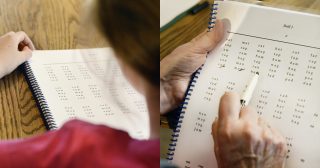12 Activities Address Two More Areas of Visual Processing
February 26th, 2009The last two areas of visual processing are visual language classification and visual integration. Strengths in visual language classification help to create good comprehension. Visual integration pulls together the tactile/kinesthetic with the vision system. These are learned skills and can be improved even if you have dyslexia, LD, or ADHD.
Visual Language Classification: The ability to classify pictures and objects by category.
1. Teach difference and sameness using plastic bears, coins, chips. The student needs to sort them into groups, classifying them. Then have them describe why they are putting them in those different piles.
2. Classify food according to food groups and explain why you are placing them into the different category.
3. After using objects, use pictures from magazines, sorting them into categories.
4. Sort word lists into categories, again, explaining why you are putting them into those lists.
5. Classify words according to prefixes, suffixes, base or root word.
6. Sort the words from The Sentence Zone game according to colors. Can be done from 1st grade – 12th.
Visual Integration: The ability to integrate body image with spatial and temporal areas.
- Play obstacle course games with students.
- Provide experiences for students to experience in, on, down, up, below, beneath, behind, over, under.
- Place an arrow on the student’s desk, reminding them which direction to start with.
- Estimate the distance between objects.
- Give students clues by using colors so they maintain proper placement in math problems. Use graph paper for math problems.
- Fold a paper into 6 or 8 sections. Give them directions to fill in the sections (e.g. Put a red ‘x’ in the top left section. Put a green ‘o’ in the middle section of the bottom row.)
Definitions of the areas are excerpted from the Learning Difficulty/Disability Pre-Screening and Informal Comprehensive Identification Tool. It will be available soon. The book contains more information on the impact difficulties in these areas have in the classroom as well as how to determine if your student has difficulties in any of these areas.
Bonnie Terry, M. Ed., BCET
Please pass the article along to anyone you think might benefit from it. And, don’t forget to sign up for the FREE Homework & Teaching Tips if you haven’t already done so. Just fill your name and email in the upper right hand corner.








































